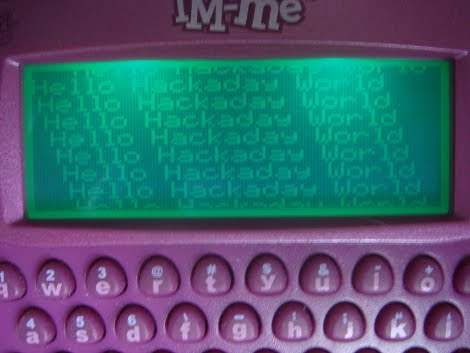
[Dave] figured out the command set for the IM-ME terminal. It took a bit of sleuthing to get this pink plastic peripheral to give up these secrets. He used an oscilloscope to sniff out the SPI connections, then used a hacked IM-ME to capture the traffic from a factory-fresh unit. He managed to extrapolate how write data was being sent but he still couldn’t figure out how commands were differentiated from that data. With the info at hand he searched around the interwebs to find that the screen uses an ST7565S controller. Now he’s got custom firmware to make the LCD display do his bidding and we’re wondering what’s next?
















